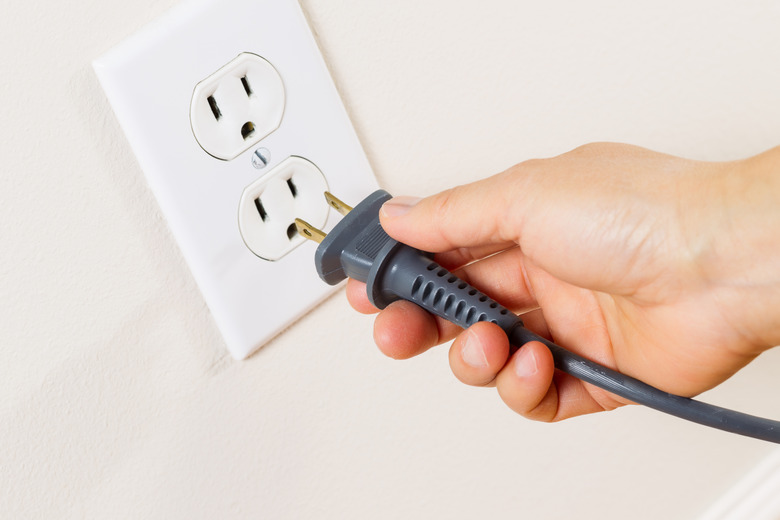How To Tell The Negative On An Electrical Appliance Cord
Thanks to engineer Nikola Tesla, who designed and helped build the first large-scale power generating station at Niagara Falls at the turn of the 20th century, the power supplied to homes throughout the world comes from alternating current generators. Because AC current changes direction many times a second, you can't speak of "positive" and "negative" terminals. Instead, one of the wires is the "hot" wire, and the other is the "neutral" or "return" wire. If you were to touch only the neutral wire, you wouldn't feel anything, but you would get a shock if you touched only the hot wire. For this reason, and for proper operation of the appliance, it's important to know how to tell them apart. Appliance manufacturers use one of several methods to distinguish the wires in power cords.
TL;DR (Too Long; Didn't Read)
The use of alternating current means that power cords have "hot" and "neutral" wires, rather than "positive" and "negative." If you have a polarized appliance cord, the neutral wire is identified by a white stripe, ribbing or white insulation. The hot wire has no ribbing or stripe, or it may be coated with black or red insulation.
The Neutral Wire Is the One With the Markings
The Neutral Wire Is the One With the Markings
Appliance cords often consist of stranded copper conductors coated with rubber insulation. The insulation is generally fused together, and one of the wires bears white a stripe or ribbing, while the other one doesn't. You might have to pull the wires apart to see this. The wire with the ribbing or stripe is the neutral wire, and the other one is hot. If you don't see any markings on the wires, and the plug has two prongs of equal size, the cord is not polarized. It's rare to find non-polarized cords on appliances manufactured in North America, but you may see one on an appliance manufactured elsewhere, such as Japan.
White Is Neutral
White Is Neutral
Some appliance cords consist of insulated wires enclosed in plastic or rubber sheathing. When you remove the sheathing, you may find two or three wires. The color of the insulation tells you which wire is neutral, because the National Electrical Code specifies that the neutral wire is always white. The Code doesn't specify a color for the hot wire, but by convention, it's either black or red. If the cord includes a ground wire, it's usually green, although it may also be bare.
Look at the Plug
Look at the Plug
You don't always have to inspect the wires to tell tell which one is neutral. Modern two-strand appliance cords usually have two-prong plugs with prongs of different sizes. Polarized receptacles are similarly designed with inlets of different sizes so that you can only insert the plug one way. On cords of this type, the larger prong connects to the neutral wire. Some three-prong plugs are also polarized, and when they are, the same rule applies: the larger prong connects to neutral. On a polarized, grounded cord, the smaller prong connects to hot and the semi-rounded pin underneath the two prongs connects to ground.
If a three-prong plug has two prongs of the same size, the only reliable way to tell which prong is neutral and which is hot is to uncover the wires and check the color of the insulation. White is always neutral.
Cite This Article
MLA
Deziel, Chris. "How To Tell The Negative On An Electrical Appliance Cord" sciencing.com, https://www.sciencing.com/tell-negative-electrical-appliance-cord-7460282/. 7 May 2018.
APA
Deziel, Chris. (2018, May 7). How To Tell The Negative On An Electrical Appliance Cord. sciencing.com. Retrieved from https://www.sciencing.com/tell-negative-electrical-appliance-cord-7460282/
Chicago
Deziel, Chris. How To Tell The Negative On An Electrical Appliance Cord last modified March 24, 2022. https://www.sciencing.com/tell-negative-electrical-appliance-cord-7460282/
